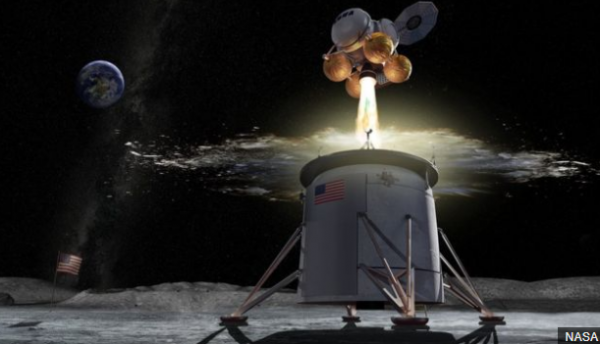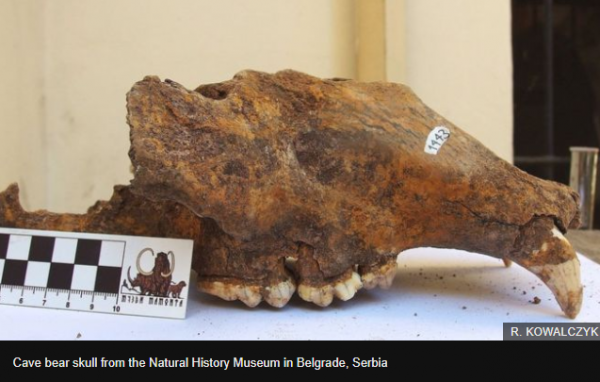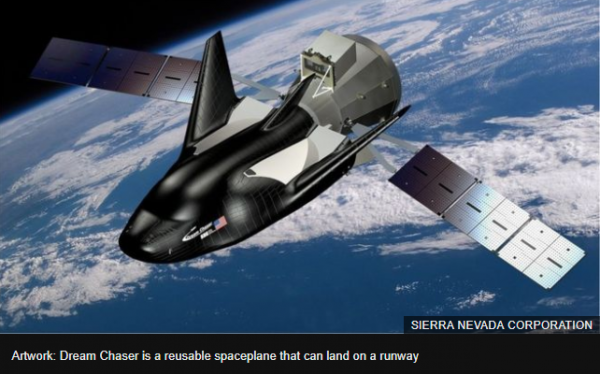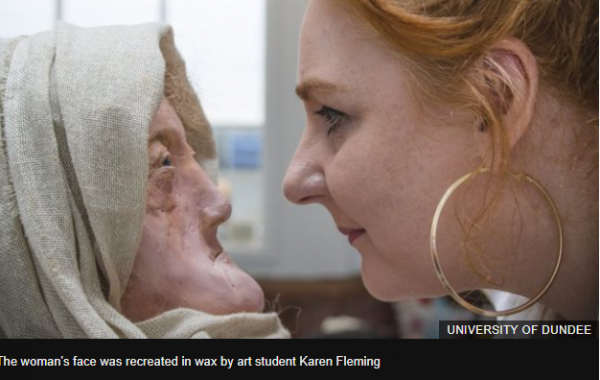-
Posts
20,847 -
Joined
-
Last visited
-
Days Won
49
Everything posted by CaaC (John)
-
World's rarest leopard is caught on camera: 'Strawberry' predator is spotted feasting on a dead giraffe at South African reserve Alan Watson, 45, and wife Lynsey, 41, set up motion camera next to a dead giraffe Caught the super-rare strawberry leopard eating in the wild for the first time Alan nicknamed her 'Goldie' and said a second leopard cub has been seen He caught the leopard four years ago on night vision when it was a cub A couple have made the ultimate spot after they caught the world's rarest leopard chomping on a dead giraffe, a moment never caught before on camera. The strawberry leopard was snapped by a motion-triggered camera pinned to a tree in Thaba Tholo Wilderness Reserve in South Africa. The pictures, taken by reserve owner Alan Watson, 45, and his wife Lynsey, 41, are the first of the pink-hued big cat eating in the wild. PHOTOS - 1/8 A rare pink-hued species of leopard has been photographed for the first time eating in the wild in Thaba Tholo Wilderness Reserve in north-eastern South Africa The leopard, the rarest known, was only first identified as a species in 2012 and has been elusive to photographers ever since. Alan Watson, 45, and his Irish wife Lynsey, 41, who caught the leopard on camera, said they had seen it before but always struggled to capture on film. They set up a motion detector camera thinking they'd only catch 'grass moving' https://www.dailymail.co.uk/news/article-7371089/Rare-strawberry-leopard-caught-feasting-time-South-Africa.html
-
Cheers buddy, just waiting to get a couple of Birthdays coming and out of the way with and I will whack in a tenner now and then
-
Celtic are keen to tie up a loan deal for Bournemouth's Jordan Ibe, 23, before the Scottish transfer window closes on 2 September. (Express)
-
I see the donation sidebar is back, is what it is saying right that this year's total has been reached? @Batard @Rab @Stan or whoever. I would like to know please so I can think about donations this year and work my budgets out.
-
Sorry to hear that Gonzo, my thoughts are with you and all the ones you love and the ones that loved your Grandpa.
-
Corinthians women equal world record for the number of wins Corinthians women have won 27 consecutive matches Corinthians have become the first professional women's team to equal the world record for the number of consecutive wins by a top-flight side. The Brazilian side beat Ferroviaria 4-0 on Sunday to claim their 27th win in all competitions. The record was held by Welsh Premier League side The New Saints (TNS). TNS broke Ajax's 44-year record in December 2016, but Corinthians can set a new record by beating Sao Jose at home on Wednesday. The Serie A1 leaders have scored 95 goals in their winning run since 26 March, conceding only eight. They have scored five or more goals in six of those matches, including a 9-0 win over Sao Francisco last month. https://www.bbc.co.uk/sport/football/49395048
-
Aug. 9, 2019 Hubble Catches 2 Galaxies at Play The pair of strange, luminescent creatures at play in this image are actually galaxies — realms of millions upon millions of stars. This galactic duo is known as UGC 2369. The galaxies are interacting, meaning that their mutual gravitational attraction is pulling them closer and closer together and distorting their shapes in the process. A tenuous bridge of gas, dust and stars can be seen connecting the two galaxies, created when they pulled the material out into space across the diminishing divide between them. Interaction with others is a common event in the history of most galaxies. For larger galaxies like the Milky Way, the majority of these interactions involve significantly smaller so-called dwarf galaxies. But every few billion years, a more momentous event can occur. For our home galaxy, the next big event will take place in about four billion years, when it will collide with its bigger neighbour, the Andromeda galaxy. Over time, the two galaxies will likely merge into one — already nicknamed Milkomeda. Text credit: ESA (European Space Agency) Image credit: ESA/Hubble & NASA, A. Evans Last Updated: Aug. 13, 2019
- 1,657 replies
-
- space exploration
- astronomy
-
(and 1 more)
Tagged with:
-
Celtic have offered 23-year-old French midfielder Olivier Ntcham to Bordeaux. (20 Minutes via Daily Record)
-
FFS, this one is scary Acutiramus Cummingsi is a species of ancient sea scorpion that could reach more than 8 feet long and had claws the size of tennis rackets. It is the largest known arthropod in history. Acutiramus Cummingsi READ MORE
-
Mario Balotelli: Ex-Man City striker signs for Brescia Former Manchester City and Liverpool striker Mario Balotelli has returned to Italy to join home town club Brescia. Balotelli, who was released by French side Marseille in June, has signed a three-year deal with the newly-promoted Serie A side. The 29-year-old reportedly rejected a move to Brazilian club Flamengo because he is keen to reclaim a spot in the Italy squad ahead of Euro 2020. He has made 36 appearances for Italy but has not featured since September. Brescia, who were crowned Serie B champions last season, are playing in the Italian top flight for the first time since 2011. Balotelli's last appearance in Serie A came in 2016 when he spent a season-long loan at AC Milan while under contract with Liverpool. That was his second spell at AC Milan - after 2013-14 - and he was part of the Inter Milan side that won the league, Italian Cup and Champions League treble under manager Jose Mourinho in 2010. Balotelli has won three Serie A titles, as well as the Premier League with Manchester City in 2012. He will be officially presented as a Brescia player at the Stadio Mario Rigamonti on Monday afternoon, a club statement revealed. https://www.bbc.co.uk/sport/football/49390452
-
Pyfish for me, very consistent and contributes to nearly all the games.
-
This guy Archer is a speed monster at that when he bowls 'Archer will send shivers around the world' Michael Vaughan Ex-England captain on BBC Test Match Special Archer is going to send shivers around batting line-ups around the world. All batting line-ups will be saying, "Did you see that spell?" We've got to face him." These were the speeds during one of Archer's overs yesterday. Seriously, seriously quick. https://www.bbc.co.uk/sport/live/cricket/47324907
-
Jesus, I bet that hit you for six, it would have me
-
Nasa picks headquarters for Moon lander A Nasa facility in Alabama that developed the giant rocket for the Apollo programme in the 1960s will play a key role in sending astronauts down to the Moon's surface in 2024. The Marshall Space Flight Center in Huntsville will lead the development of a vehicle that will land astronauts on the body for the first time since 1972. The decision was announced by Nasa's administrator Jim Bridenstine. But it's a disappointment for Texas, which was in the running. The White House wants to send a man and a woman to the South Pole of the Moon in five years, under a programme called Artemis. Huntsville in northern Alabama is known as "Rocket City", because of its long association with the space programme. It was here that the huge Saturn V launcher, which lofted humans into orbit during the Apollo programme in the 1960s and 70s, was designed, built and tested. Nasa Moon lander vision takes shape Mr Bridenstine made the announcement at the Marshall facility in front of a test version of the 45m- (149ft-) tall hydrogen tank for the Space Launch System rocket, which will launch the astronauts on their journey from Earth in 2024. "This was not a decision that was made lightly. A lot of hard work has been done here in Huntsville over well over 10 years now regarding landing systems," Mr Bridenstine said on Friday. But not everyone will be happy about the decision. Before the formal announcement, Texas legislators including Senator Ted Cruz had written an open letter to Mr Bridenstine pushing for Nasa's Johnson Space Center, based in Houston, Texas, to lead the lander development. Splitting work Responding to a report that Marshall would be announced as the lead, the lawmakers said: "While the Marshall Space Flight Center specialises in rocketry and spacecraft propulsion and is undoubtedly the leader in these areas, it is the Johnson Space Center, which has been, and continues to be, ground zero for human space exploration. "We are deeply concerned that Nasa is not only disregarding this history but that splitting up the work on the lander between two different geographic locations is an unnecessary and a counterproductive departure from the unquestionable success of the previous lunar lander programme." Johnson Space Center was in charge of lunar lander development during the Apollo programme. Responding to the objections, Mr Bridenstine pointed out that of 363 jobs associated with the lander, 140 would be based at Huntsville, while 87 would be at Johnson Space Center. How America will return to the Moon "Johnson Space Center, when it comes to human-machine interface, all the great capabilities that they have throughout time, with the astronaut corps being headquartered there, there's going to be lots of opportunity for them," Mr Bridenstine added. He also said Nasa Johnson would be leading work on the Gateway, a small space station in lunar orbit where astronauts will dock before going down to the lunar surface. Last month, Nasa called on the industry to submit ideas for an initial version of the lander that could take two astronauts down to the Moon in 2024. Eventually, it wants to build a lander split into three stages that can ferry four people down from Gateway to the lunar surface.
- 1,657 replies
-
- space exploration
- astronomy
-
(and 1 more)
Tagged with:
-
Unfinished Song (the original title A Song for Marion - 2012) with Terence Stamp and Vanessa Redgrave, the wife put this one on as it was on BBC 2 Films and I bloody enjoyed it, it was a comedy-drama but it did bring a wee tear to my eyes at the end, I would give this an 8.5/10.
-
It's funny how you look back on things, the photo of wee Kaiden and me when he was just under a year old, the highchair he is sitting in, his big brother Conner (13) and his wee nephew (12) have sat in that same highchair when they were the same age and fed me or the wife some of his nosh when we were babysitting or having a visit from our son or daughter. It was a sad day for me when I was clearing the cupboard downstairs out and saw it sitting there all by its lonesome self, all dusty and I decided to get rid of it.
-
It is great to watch that, I saw Conner (grandson now13) when he was just a year old on his First Birthday in his relaxing chair, one of the wee girls was playing with one of his Birthday toys at his Birthday party, she must have been around 5 years old, he saw her and scooted over and pulled her hair, I pissed myself laughing.
-
Ancient reptile the size of a gecko with 'large, blunt, tusk-like teeth' lived on the supercontinent Gondwana 237 million years ago SLIDES 1/4 An ancient reptile the size of a gecko with 'large, blunt, tusk-like teeth' lived on the southern supercontinent Gondwana 237 million years ago, a new study reveals. Fossilised jaws and skull bones from the creature were discovered in rocks dating back to the Triassic period. That makes it the oldest known fossil of its kind in Gondwana, which would eventually become Africa, Antarctica, Australia, India, and South America. Researchers from Midwestern University discovered the fossils in the Rio Grande do Sul state in southern Brazil. They say the new species, known as Clevosaurus hadroprodon, was a small animal, similar in size with common house geckos. It belongs to the Sphenodontia, a group of lepidosaurs, which also includes snakes, lizards and amphisbaenians. This group was very diverse and widespread during the Mesozoic era - which includes the Triassic, Jurassic and Creataceous periods around 250 to 65 million years ago - but today has only one remaining living species in New Zealand. The name 'hadroprodon' is Greek for 'larger first tooth' in reference to the tusk-like teeth found on the creature. 'Clevosaurus hadroprodon is an important discovery because it combines a relatively primitive sphenodontian-type tooth row with the presence of massive tusk-like teeth, said Annie Schmaltz Hsiou, associate professor at the University of São Paulo and head of the study. Gallery: Species that have gone extinct in our lifetime (Photo Services) SLIDES 1/24 'These were possibly not for feeding, but rather used for mate competition or defence.' The dentition of Clevosaurus hadroprodon is an unexpected mix of primitive and derived teeth. It is the oldest occurrence of the typical fully acrodont dentition - teeth fused to the top of the jawbones - of sphenodontians, but most of its teeth are relatively simple and blade-like. This differs from other, only slightly younger Clevosaurus species that possess well-developed medial-posteromedial - side-to-side - expansions of the teeth for complex grinding. In addition to its unique dentition, the authors stress that also adds to the growing evidence that the early diversification of sphenodontians occurred in the widely separated regions of Gondwana destined to become South American and India. This illustrates the importance of the role of the Gondwanan lepidosaur fauna in our growing understanding of the earliest stages of sphenodontian evolution and the global biogeographic distribution of lepidosaurs. https://www.msn.com/en-gb/news/offbeat/ancient-reptile-the-size-of-a-gecko-with-large-blunt-tusk-like-teeth-lived-on-the-supercontinent-gondwana-237-million-years-ago/ar-AAFQ8TN
-
Stash of ancient diamonds is discovered near the Earth’s core An ancient reservoir of diamonds that is older than the moon has been discovered near the Earth’s core, more than 410km below the surface. The diamonds had lain undisturbed for more than 4.5 billion years before being brought to the surface by a violent volcanic eruption in Brazil. An international group of scientists measured helium isotopes – different atomic forms of helium – in the diamonds to find the ancient reservoir, according to a study published in Science. Researchers say they acted as “perfect time capsules” that gave them an insight into the tumultuous period shortly after the planet formed. During this period there was so much violent geological activity that almost nothing of the young planet’s original structure remained. However, amid all this change, it had long been suspected there was an area of the mantle somewhere between the crust and core which had been relatively undisturbed. Until now, there was no proof it existed. The diamonds were ‘perfect time capsules’ that gave scientists an insight into a violent period shortly after the Earth formed (Graham Pearson) The first clues came in the 1980s when scientists noticed some basalt lavas from particular locations had a ratio of helium-3 to helium-4 isotopes that was higher than usual. What was particularly interesting was that this ratio mirrored the isotope ratio found on early meteorites that had crashed into Earth. This suggested the lava had come from some deep reservoir in Earth which hasn’t changed for billions of years. “This pattern has been observed in ‘ocean island basalts’, which are lavas coming to the surface from deep in the Earth, and form islands such as Hawaii and Iceland,” said Dr Suzette Timmerman, from the Australian National University, who led the research. “The problem is that although these basalts are brought to the surface, we only see a glimpse of their history. We don’t know much about the mantle where their melts came from,” said Dr Timmerman. To find out more, researchers studied helium isotope ratios in super-deep diamonds that formed between 150 and 230km below the Earth’s crust. “Diamonds are the hardest, most indestructible natural substance known, so they form a perfect time capsule that provides us with a window into the deep Earth,” she said. “We were able to extract helium gas from 23 super-deep diamonds from the Juina area of Brazil. “These showed the characteristic isotopic composition that we would expect from a very ancient reservoir, confirming that the gases are remnants of a time at or even before the moon and Earth collided.” By studying the diamonds, scientists could tell they came from an area called the ‘transition zone’ which is between 410 and 660km below the surface of the Earth. “This means that this unseen reservoir, leftover from the Earth’s beginnings, must be in this area or below it,” said Dr Timmerman. No one knows the size of the reservoir and they believe there could be more than one of them. Professor Matthew Jackson from the University of California, Santa Barbara, who was not involved in the research, said the result was “interesting” and would help scientists map out where these ancient domains are in the Earth’s deep interior. “This work is an important step towards understanding these reservoirs, and points the way to further research,” he said. Scientists will present their work at the Goldschmidt conference in Barcelona later this month. https://www.msn.com/en-gb/news/techandscience/stash-of-ancient-diamonds-is-discovered-near-the-earths-core/ar-AAFRavE?MSCC=1565948664&ocid=chromentp
-
Extinction: Humans played a big role in the demise of the cave bear The arrival of human ancestors in Europe some 40,000 years ago coincided with the downfall of the cave bear, scientists have revealed. New evidence suggests humans hunted the bear and drove it from caves, putting it on the road to extinction. The fate of the species was sealed by other pressures, such as the onset of the last Ice Age, and shrinking food resources. The bear eventually died out 24,000 years ago. "We see this dramatic drop in the population of the cave bear starting from 40,000 years ago, which coincides with the arrival of anatomically modern humans in Europe," said Prof Verena Schuenemann of the University of Zurich, who led the study. "It is the clearest evidence we have so far that humans might have played a big role in the extinction of the cave bear." What is a cave bear? Cave bears were a type of bear that lived in Asia and Europe. They share a common ancestor with the modern brown bear. The cave bear fed largely on vegetation instead of meat. Fossils of the species are usually found in caves, suggesting the animals spent a lot of time there, rather than using caves purely for hibernation. More stories like this: DNA clues to why woolly mammoth died out Humans 'off the hook' for big extinction Humans 'threaten 1m species with extinction' What did the study find? The researchers analysed mitochondrial DNA extracted from cave bear bones collected across Switzerland, Poland, France, Spain, Germany, Italy and Serbia. They were able to map where cave bears lived and their diversity at a time when many large mammals roamed the Earth. It appears that populations were more diverse than previously thought and remained relatively stable until around 40,000 years ago, surviving two cold periods and several cooling events. The findings support the idea that human influences played a major role in pushing the cave bear to the brink. The extinction of the cave bear is a matter of much debate, with explanations including human interference, environmental changes or a combination of both. The latest study, published in Scientific Reports, gives a deeper insight into the subject but is unlikely to be the final word. https://www.bbc.co.uk/news/science-environment-49345392
-
Spaceplane gets a ride for space station trips The Dream Chaser spaceplane, which will ferry cargo to the International Space Station (ISS), now has a rocket to launch on. Sierra Nevada, the private company that builds the spaceplane, has chosen the Vulcan rocket as its ride into orbit. The company hopes to start launching missions by 2021, to deliver supplies to astronauts on the ISS. Neither the Dream Chaser vehicle nor the Vulcan rocket, has yet flown to space. Sierra Nevada was recently awarded the contract by Nasa to re-supply the ISS. It joins two other private companies that already ship cargo and experiments to the station - SpaceX and Orbital ATK. The Vulcan Centaur rocket, built by United Launch Alliance (ULA), is currently in production. Under its Nasa contract, Dream Chaser has to fly a minimum of six missions to the ISS. The first of these will serve as the Vulcan Centaur's second "certification flight" - which will validate the rocket. "Our first launch is 2021, so we can't wait to have the first successful mission," said Sierra Nevada Corp's chief executive Fatih Ozmen at a news conference in Louisville, Colorado. "[Dream Chaser] is the only privately-owned, commercial spaceplane in the world that exists that is runway- and landing-capable and reusable." Dream Chaser will deliver more than 5,443kg (12,000 lbs) of cargo to the space station, remaining attached for up to 75 days as an orbiting laboratory. When the missions end, the vehicle will return through the atmosphere and land at Nasa's Kennedy Space Center in Florida. The Vulcan Centaur will use BE-4 engines developed by Amazon founder Jeff Bezos's space company Blue Origin. Tory Bruno, chief executive of ULA, said the Vulcan was currently "on time" for its journey to the launch pad in 2021. But he added that if a delay did arise, ULA would use its Atlas V rocket as a back-up. Dream Chaser was designed as a crew vehicle. Sierra Nevada Corp competed for the Nasa contract to send astronauts to the ISS, under the agency's Commercial Crew Program. The contract eventually went to Boeing and SpaceX, but Sierra Nevada made it to the final round. And the company still wants the spaceplane to fly astronauts one day. "The bridge to a crewed vehicle is not that far," said John Curry, programme director for Dream Chaser. "The capability is there and we're more than happy to do it, whether it's for Nasa or for somebody else. "Crewed missions are coming, we just need to build it and they will come." https://www.bbc.co.uk/news/science-environment-49352720
- 1,657 replies
-
- space exploration
- astronomy
-
(and 1 more)
Tagged with:
-
'Human-sized penguin' lived in New Zealand The remains of a giant penguin the size of a human have been discovered in New Zealand. The fossilised bones are of an animal thought to have been about 1.6m (5ft 3in) tall, weighing up to 80kg (176lb). It lived in the Paleocene Epoch, between 66 and 56 million years ago. The animal, dubbed "monster penguin" by Canterbury Museum, adds to the list of now-extinct gigantic New Zealand fauna. Parrots, eagles, burrowing bats and the moa, a 3.6m-tall bird, also feature. Why was the penguin gigantic? "This is one of the largest penguin species ever found," Paul Scofield, the museum's senior curator, told the BBC. It was specific to the waters of the Southern Hemisphere, he added. Penguins are thought to have become this big because large marine reptiles disappeared from the oceans, around the same time that dinosaurs disappeared. "Then, for 30 million years, it was the time of the giant penguins," Mr Scofield said. Today's largest species, the Emperor Penguin, grows to about 1.2m tall. "We think that at the time, animals were evolving very rapidly," Mr Scofield explained. "Water temperatures around New Zealand were ideal back then, around 25C (77F) compared to the 8C we have now." During the time of the giant penguin, New Zealand was still joined with Australia, which in turn is thought to have been connected to Antarctica. The new species, crossvallia waiparensis, resembles another prehistoric giant penguin, crossvallia unienwillia, which was found at a site in Antarctica. According to the researchers, the crossvallia penguin's feet probably played a bigger role in swimming than those of modern penguins. It likely shared the waters around New Zealand with "giant turtles, corals and strange-looking sharks," Mr Scofield says. Why isn't it around anymore? It's not entirely clear why the giant penguins disappeared from the waters of the Southern Hemisphere. The most commonly held theory is that it's simply due to growing competition with marine mammals. "At the time giant penguins evolved, the large marine reptiles just had become extinct," Gerald Mayr, another author of the new study, told the BBC. "In Antarctica and New Zealand, there were no large marine competitors until the arrival of toothed whales and pinnipeds (seals) many million years later." The extinction of the giant penguins seems to correlate with the rise of these competitors, but the exact reasons for the disappearance of giant penguins are still being discussed, Mr Mayr cautions. Where was it found? The leg bones of the new species were discovered at a site in North Canterbury last year and have since been analysed by an international team. "This site is pretty much unique," Mr Scofield said. "It's a river bed cutting into a cliff." The place has been the site of fossil finds since the 1980s, and many of the discoveries - like this latest one - are made by dedicated amateur palaeontologists. https://www.bbc.co.uk/news/world-asia-49340715
-
Student recreates the face of a druid from Stornoway The face of a woman believed to have been a Scottish druid has been recreated by a student from the University of Dundee. The woman could have been more than 60 years old when she died during the Iron Age, sometime between 55BC and AD400. Nicknamed Hilda, she is thought to have lived near Stornoway. She is thought to be of Celtic origin and her skull now resides in the Anatomy Collection at the University of Edinburgh. The skull was first presented to the Phrenological Society of Edinburgh in 1833, described as one of the six "Druids of the Hebrides"... FULL STORY





.png.89fa76aa1ff570be2479bd61226c4e0b.png)







.png.8e4fd5a65d8eb51bed49849c3278f6ea.png)
.png.5040218a98bf16f99468c8a71daa80d4.png)







.thumb.png.5a226427ed64ecfdb8095f85ec75f824.png)


.thumb.png.6dad0e6728d75a970d78093c732735fe.png)
.thumb.png.03d601c6afaca590e03402a0198f243f.png)

.thumb.png.d7cb85340489ce2b55c40d0eaf753e90.png)
.thumb.png.e417f454721f774eb50746ed0cd29fa7.png)

